Even though eyelid surgery offers very good results, there are certain risks and complications that the procedure can possibly bring. You should know that such complications are very rare with blepharoplasty, however they are still possible. Surgery performed by a good and highly qualified doctor reduces risk for complications, nonetheless there is still some risk remaining.
Blepharoplasty complications
There may be some complications that almost do not depend upon a doctor. Such are an infection or an inadequate reaction of a patient to anesthesia. These conditions can be controlled with certain medications. Unfortunately, if they happen these complications may cause your recovery period last longer.
Some complications happen as a result of a surgery. Such can be a blurred or double vision for some time after eyelid surgery. Other minor complications may include swelling at the corner of the eyelids and decreased sensation in the eyelid. Some patients may experience asymmetry in healing and scarring. You may also feel dryness, burning, stinging feeling in your eye(s). This could be possible controlled with administration of artificial tear eye drops. Some patients may experience an excessive tearing. These complications are minor and usually temporary and need no serious treatment.
A slightly greater complication is retrobulbar hematoma (an accumulation of blood under skin). This may occur straight after surgery. Blood accumulation under skin may heal gradually itself or it may need to be removed in some cases. Hematoma is more probable when eyelid surgery is performed in combination with other aesthetic facial surgeries, such as facelift, brow lift or forehead lift.
Most complications depend both on a patient’s individual characteristics and on a doctor’s experience. Post-operatively a decreased eyelid function may be observed. Some people may find it hard closing their eyes. This condition is usually temporary and should disappear some time after surgery, however, some patients may need additional treatment. Patients may have difficulty in properly closing their eyes while sleeping. The condition is most often temporary but in some cases it might become permanent. Another problem with the eyelids may include ectropion, pulling down of the lower eyelid, and should be treated with additional surgery. Some complications are associated with healing of the scars. A problem may occur in healing of the incision areas. There may appear prominent or firm scars that would be visible unless covered with make-up. When the surgeon takes out the stitches, tiny whiteheads, called milia, may appear in the sight of the stitches. These whiteheads can be efficiently removed by a surgeon with a fine needle.
More serious complications that can be caused by blepharoplasty include an impaired vision and retinal detachment. Since it is a surgery in the area around the eyes any ophthalmological problems may be a risk for complications after surgery. Your eye doctor’s consultation would be relevant prior to eyelid surgery.
Blepharoplasty never includes systemic complications
Since blepharoplasty is a minor aesthetic surgical procedure it rarely or almost never includes systemic risks and complications. Most of the complications can be easily treated with simple treatment or further surgery may be needed. Additional factors of your physical state may increase risk for complications. Such factors are systemic diseases, such as hypothyroidism, Grave’s disease, insufficient tear production or dryness of the eyes, increased blood pressure, cardiovascular or circulatory disorders, and diabetes. You should discuss all these problems with your doctor pre-operatively so that he or she can evaluate your risk for possible complications.
Be aware that most of the above mentioned complications and risks are very infrequent, however, as with all surgery there is always some risk. Your doctor or a member of his staff should discuss all the possible aspects of risks and complications of eyelid surgery prior to the procedure. Your job is to understand all the possible complications and ask the doctor how you could help yourself to avoid the risk. It is important for you to cooperate with your doctor and carefully follow your doctor’s instructions to reduce the risk. Patience, your will to cooperate and a qualified surgeon are all the factors you need for eyelid aesthetic surgery procedure to go smoothly and without any complications post-operatively.
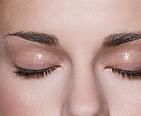 Use creams, gels and beauty treatments, other skin preparations to improve the appearance to tighten the skin around the eyes and to reduce dark rings, however, there is no scientific proof that they work on a permanent basis. Means of beauty should be used regularly otherwise initial appearance will come back. If there is a problem with a heavy brow that contributes to drooping upper eyelid skin the eyelid surgery can be performed, but if patient doesn’t want to the
Use creams, gels and beauty treatments, other skin preparations to improve the appearance to tighten the skin around the eyes and to reduce dark rings, however, there is no scientific proof that they work on a permanent basis. Means of beauty should be used regularly otherwise initial appearance will come back. If there is a problem with a heavy brow that contributes to drooping upper eyelid skin the eyelid surgery can be performed, but if patient doesn’t want to the 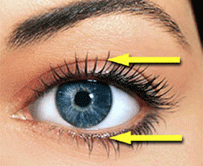 After your initial consultation a doctor decides whether you need eyelid surgery alone or in combination with other facial cosmetic surgeries. After thorough discussion of your medical history, your problems and expectations a surgeon will decide whether you are a
After your initial consultation a doctor decides whether you need eyelid surgery alone or in combination with other facial cosmetic surgeries. After thorough discussion of your medical history, your problems and expectations a surgeon will decide whether you are a 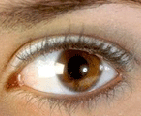 Eyelid surgery, also called blepharoplasty in professional medical language, is a cosmetic procedure during which excess fat and skin along with the muscle is removed from the upper and lower eyelids. Drooping upper eyelids and puffy bags under your eyes can make you look older than you are. These features are due to the aging process and are caused by excess fat and skin around your eyes. Weakening of the muscle of lids also cause these particular features. Drooping upper eyelids and puffy bags under your eyes may not only change your appearance and cause some psychological problems but also some cases may interfere with your vision. Puffiness of lower lids cannot be improved with the application of any cream or other skin care products. This problem can only be solved with the help of blepharoplasty.
Eyelid surgery, also called blepharoplasty in professional medical language, is a cosmetic procedure during which excess fat and skin along with the muscle is removed from the upper and lower eyelids. Drooping upper eyelids and puffy bags under your eyes can make you look older than you are. These features are due to the aging process and are caused by excess fat and skin around your eyes. Weakening of the muscle of lids also cause these particular features. Drooping upper eyelids and puffy bags under your eyes may not only change your appearance and cause some psychological problems but also some cases may interfere with your vision. Puffiness of lower lids cannot be improved with the application of any cream or other skin care products. This problem can only be solved with the help of blepharoplasty. The most important is to have realistic expectations about eyelid surgery. Although the procedure improves your appearance, enhances your self-esteem you should not hope that eyelid surgery will make other people treat you differently. Bear in mind that
The most important is to have realistic expectations about eyelid surgery. Although the procedure improves your appearance, enhances your self-esteem you should not hope that eyelid surgery will make other people treat you differently. Bear in mind that  Let’s start from your initial consultation with your surgeon and what will be done during it. You should know all your medical history before seeing your doctor at the first time. It is important to tell your doctor all the medical facts from your past history, such as diseases that you had or still have. You should also inform your doctor about any medicines that you are taking. Do not forget to mention if you smoke or have any allergies. Although your surgeon will check your vision and tear production, information from your ophthalmologist with your recent eye check is significant. Bring your glasses or contact lenses if you wear ones.
Let’s start from your initial consultation with your surgeon and what will be done during it. You should know all your medical history before seeing your doctor at the first time. It is important to tell your doctor all the medical facts from your past history, such as diseases that you had or still have. You should also inform your doctor about any medicines that you are taking. Do not forget to mention if you smoke or have any allergies. Although your surgeon will check your vision and tear production, information from your ophthalmologist with your recent eye check is significant. Bring your glasses or contact lenses if you wear ones. 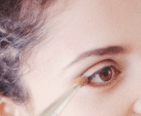 You will have to follow your doctor’s instructions on how to behave
You will have to follow your doctor’s instructions on how to behave 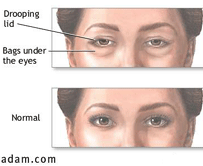 By removing excess fat and skin from lower and upper eyelids, eyelid surgery removes puffiness of upper lids and bags below the eyes. This causes you look rested, younger and alert. Eyelid surgery offers excellent results that are long-lasting or even permanent to most of the patients. However, hereditary or individual life-style factors may influence how long the results will last.
By removing excess fat and skin from lower and upper eyelids, eyelid surgery removes puffiness of upper lids and bags below the eyes. This causes you look rested, younger and alert. Eyelid surgery offers excellent results that are long-lasting or even permanent to most of the patients. However, hereditary or individual life-style factors may influence how long the results will last.